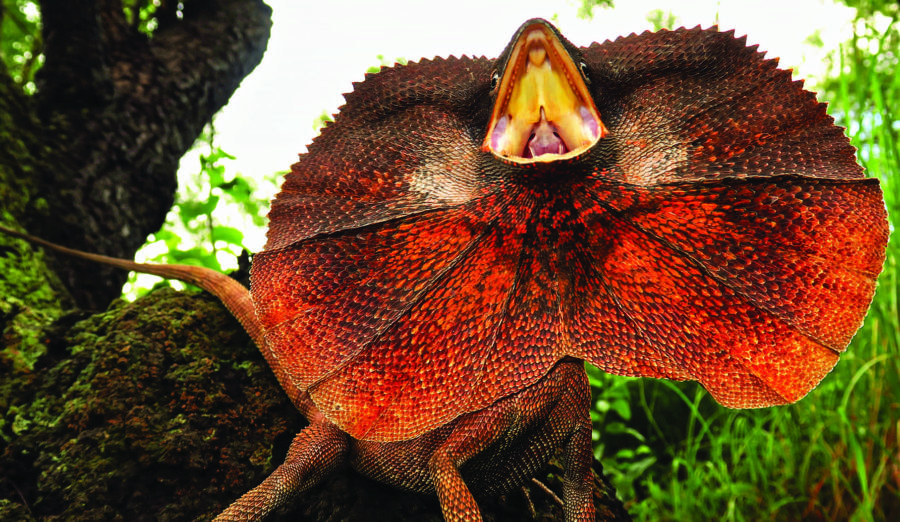Bearded dragons switch colour to match surroundings

Move over chameleons – Australia’s central bearded dragons (Pogona vitticeps) are also known to switch skin colour in seconds, whether for a courtship display or to maintain body temperature.
The University of Melbourne‘s Viviana Cadena, an expert in ecophysiology (the study of how organisms adapt to their environment) wanted to find out how bearded dragons switch shades according to changes in their surroundings, such as sand colour and light intensity.
Viviana and her team’s findings, published today in The Journal of Experimental Biology, reveal how colour change has helped bearded dragons adapt to their unique environments and survive in the wild.
“It was already clear to us that colour change in bearded dragons plays several roles, as I noticed during a previous study that they changed colour when handled or if their body temperature changed,” said Viviana. “But we wanted to understand how colour change is prioritised for these different functions.”
The researchers collected wild lizards from Mildura, Victoria and the red desert in Alice Springs in the Northern Territory. The researchers chose lizards from these two locations because they display the biggest difference in skin colour and habitat out of Australia’s bearded dragon populations.
Capturing the bearded dragons was no easy feat. “Spotting them in the wild and catching them takes a lot of practice,” said Viviana. “You definitely have to be ok with a few scratches if you’re going to be a bearded dragon catcher!”
Once the team had captured 11 lizards from each location, they brought them back to the lab in Melbourne to observe how each group responded to various background and light conditions.
First, the researchers placed each lizard in boxes of red sand, yellow sand and black sand to see how they switched colours according to different backgrounds. Next, the team observed how each group responded to changes in light intensity, ranging between bright daylight, overcast and early sunrise conditions.
After photographing the bearded dragons, the researchers found that both populations were able to adjust their skin colour according to their surroundings. But lizards from the yellow-sanded areas of Mildura displayed a lighter hue than the more orange-toned group from Alice Springs.
Surprisingly, both populations were able to colour-match with each background more accurately under low light conditions, indicating they can avoid being spotted by predators during dawn and dusk.
Rick Shine, an evolutionary biologist from the University of Sydney, said the findings reveal important information about how bearded dragons have evolved to their environment.
“This paper shows that bearded dragons are remarkably sophisticated in shifting colours,” said Rick, who was not involved in the study. “It’s yet more evidence that reptiles are sophisticated creatures that are intricately adapted to the challenges they face in the natural world.”


